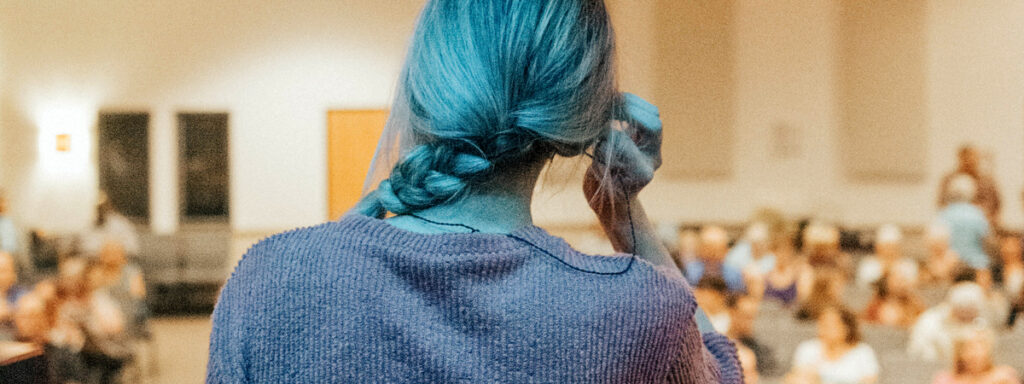In today’s competitive marketplace, particularly for artists and creatives, it’s more important than ever to have a compelling brand story that truly connects with your target audience.
This article will guide you through the process of crafting an authentic brand story that resonates with your audience and helps you build lasting relationships.
So, grab your favorite sketchbook, and let’s dive in!
Table of Contents
- Understanding Your Target Audience
- Uncovering Your Brand’s Unique Narrative
- Incorporating Authenticity into Your Brand Story
- Aligning Your Brand Story with Your Target Audience
- Choosing the Right Channels to Share Your Story
- Consistency and Evolution of Your Brand Story
- Measuring the Impact of Your Brand Story
- Conclusion
Understanding Your Target Audience

To create a brand story that captivates your audience, you first need to understand who they are. Take some time to define your target audience as artists and creatives.
- Who are they?
- What are their interests, aspirations, and challenges?
By conducting thorough market research and creating detailed buyer personas, you can gain valuable insights into their needs, preferences, and values.
When I started my journey as a creative and sharing my work online, I realized that many fellow artists may be struggling on how to market and sell their artworks.
Understanding this pain point helped me shape my brand story to emphasize my commitment to providing resources and my experiences to support fellow artists in their creative endeavors.
Uncovering Your Brand's Unique Narrative
Now that you know your audience, it’s time to uncover your brand’s unique narrative. Reflect on your own journey and experiences as an artist.
- What inspired you to pursue your craft?
- What challenges have you overcome?
By digging deep and identifying the core values and mission behind your brand, you can create a story that resonates on a personal level with your target audience.
When I started my design studio, I faced numerous obstacles, from self-doubt to financial struggles. However, through sheer determination and a passion for creativity, I managed to start a fledgling personal brand. This journey became an integral part of my brand story, showcasing my resilience and the belief that anything is possible with passion and dedication.
For more information on personal branding, I wrote an article on it: “The Power of Personal Branding: Building Your Professional Identity.”
Incorporating Authenticity into Your Brand Story
Authenticity is the key to connecting with your target audience on a deeper level. Embrace vulnerability and honesty in your storytelling.
Share personal anecdotes and relatable experiences that showcase the human side of your brand.
This authenticity will resonate with your audience and create a sense of trust and connection.
TidBits:
Don’t be afraid to show your imperfections. As artists, we understand that the creative process is messy and filled with trial and error.
By being open about your own creative struggles and how you overcame them, you’ll inspire and forge a genuine connection with your target audience.
Aligning Your Brand Story with Your Target Audience
Now that you have a compelling brand story, it’s time to align it with the interests, emotions, and desires of your target audience.
Research their favorite artists, art styles, and current trends.
Tailor your brand story to resonate with their aspirations and address their pain points, showing them how your brand can offer solutions and enhance their creative journey.
When I discovered that many artists in my target audience were seeking ways to promote their artwork online, I incorporated this insight into my brand story.
I emphasized how my design studio not only provided artistic services but also offered marketing guidance and support, helping artists showcase their work to a wider audience.
Choosing the Right Channels to Share Your Story
Now that your brand story is ready to be shared, it’s crucial to choose the right channels to connect with your target audience effectively.
Identify the platforms where artists and creatives are most active. Leverage social media, websites, and blogs to amplify your brand story and engage with your audience.
Use visual and multimedia content, such as captivating images, videos, and behind-the-scenes glimpses, to draw them into your brand’s narrative.
TidBit:
Each social media platform has its own strengths and characteristics. Tailor your storytelling approach accordingly. For instance, Instagram is perfect for visually showcasing your artwork, while platforms like YouTube or TikTok allow you to deeply engage with your target audience through video content.
I wrote an article earlier about social media marketing, check it out to learn more: “Social Media Marketing 101: Building Your Brand’s Presence.”
Consistency and Evolution of Your Brand Story
Consistency is key when it comes to branding. Maintain a consistent brand voice across all touch points, ensuring that your story remains authentic and recognizable.
However, don’t be afraid to evolve your brand story as your audience grows and changes.
Keep an eye on their feedback and preferences, and adapt your narrative accordingly to stay relevant.
As my own brand evolved, I noticed a shift in my target audience’s preferences towards digital art. Although I initially focused on traditional art in my brand story, I embraced this change and adjusted my narrative to showcase my expertise and passion for digital illustration.
By staying open to evolution, I was able to strengthen my connection with my target audience and expand my reach.
Measuring the Impact of Your Brand Story
To gauge the effectiveness of your brand story, it’s essential to set clear goals and key performance indicators (KPIs).
Use analytics and metrics to track engagement, conversions, and other relevant data.
Analyze this information regularly and make informed decisions about adjusting and refining your brand story based on data-driven insights.
When I used analytics tools to measure the impact at the companies I worked at, I discovered that certain types of content, such as video tutorials and personnel interviews, received higher engagement and drove more conversions.
Armed with this knowledge, I tailored my content strategy to focus on these areas, resulting in a stronger connection with my target audience.
Conclusion
Crafting an authentic brand story that connects with your target audience is a powerful way to establish a meaningful relationship and drive long-term success in your creative endeavors.
By understanding your audience, uncovering your unique narrative, and sharing your story with authenticity, you’ll create a bond that goes beyond your artistic talents.
So, go ahead and let your brand story shine, and watch as your audience embraces and supports your creative journey.
Remember, your story matters, and your audience is waiting to connect with you.



